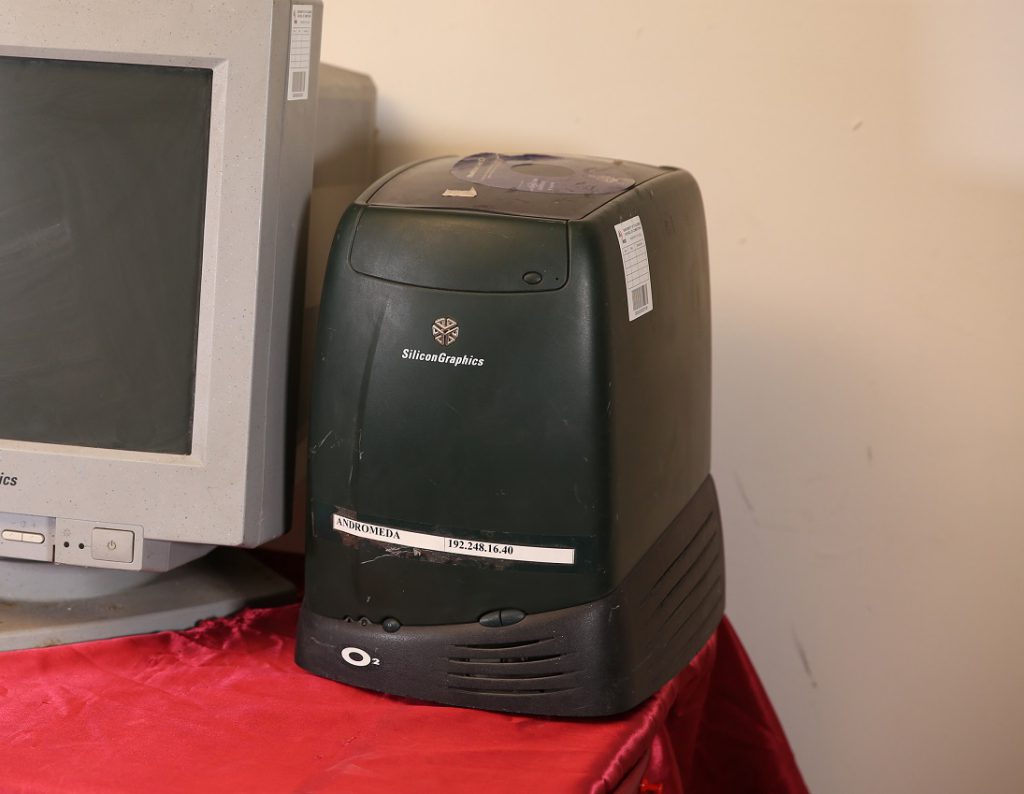- Model: CMNB014ANT180
- Developer: Silicon Graphics, Inc.
- Manufacturer: Silicon Graphics, Inc.
- Released in: 1996
- Operating System:
- IRIX 6.3 or 6.5.x (native platform).
- Linux: Gentoo and Debian
- OpenBSD
- NetBSD
Specifications
- CPU : MIPS R5000 CPU @ 200MHz w/ FPU
- Memory : 128 MB ECC RAM (exp. to 1GB)
- Storage (internal) : 9GB Ultra Fast/Wide drive | 40X CD-ROM (standard)
- Storage (external) : 3.5″ floppy drive | 12GB 4 mm DAT drive | Digital linear tape
- Networking : Second 100Base-TX Ethernet | ISDN basic rate interface | ATM adapter OC3 (155Mb/sec), 1 PCI port | Fibre Channel adapter
- Display resolution : 1280×1024 at 75 Hz
- Graphics: Texture mapping in hardware, native OpenGL graphics subsystem, hardware Z buffer, triangle rasterization in hardware,
- hardware image mapping support, hardware stencil planes, hardware anti-aliasing, source plus destination alpha in hardware, fast Xline performance
Description
The SGI O2 is an entry-level Unix workstation introduced in 1996 by Silicon Graphics, Inc. (SGI) to replace their earlier Indy series. Like the Indy, the O2 used a single MIPS microprocessor and was intended to be used mainly for multimedia. Its larger counterpart was the SGI Octane. The O2 was SGI’s last attempt at a low-end workstation.
The O2 uses the CRM chipset that was specifically developed by SGI for the O2. It was developed to be a low-cost implementation of the OpenGL 1.1 architecture with ARB image extensions in both software and hardware. The chipset consists of the microprocessor, and the ICE, MRE and Display ASICs. All display list and vertex processing, as well as the control of the MRE ASIC is performed by the microprocessor. The ICE ASIC performs the packaging and unpacking of pixels as well as operations on pixel data. The MRE ASIC performs rasterization and texture mapping. Due to the unified memory architecture, the texture and framebuffer memory comes from main memory, resulting in a system that has a variable amount of each memory. The Display Engine generates analog video signals from framebuffer data fetched from the memory for display.
The SGI O2 has an Imaging & Compression Engine (ICE) application-specific integrated circuit (ASIC) for processing streaming media and still images. ICE operates at 66 MHz and contains a R3000-derived microprocessor serving as the scalar unit to which a 128-bit SIMD unit is attached using the MIPS coprocessor interface. ICE operates on eight 16-bit or sixteen 8-bit integers, but still provides a significant amount of computational power which enables the O2 to do video decoding and audio tasks that would require a much faster CPU if done without SIMD instructions. ICE only works with the IRIX operating system, as this is the only system that has drivers capable of taking advantage of this device.
Datasheet: https://unixhq.com/websgt/02.pdf

